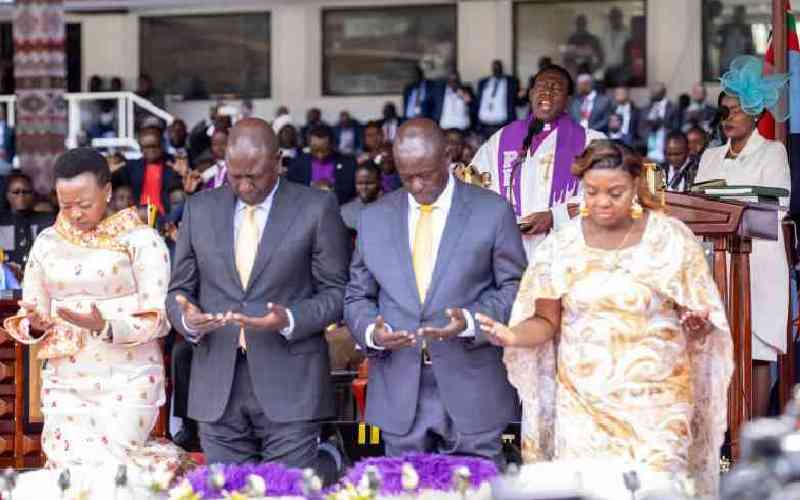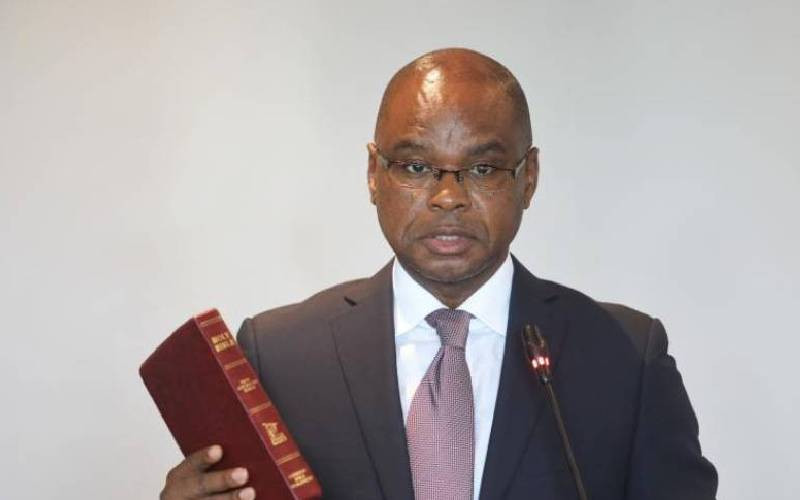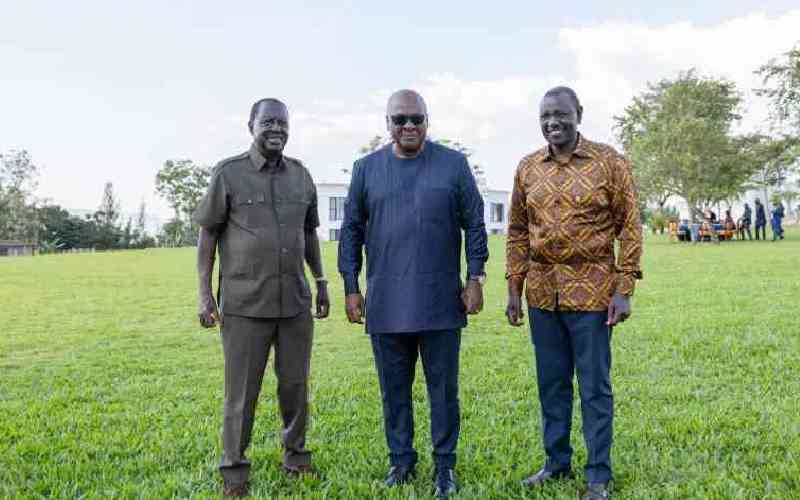In Europe, nationalism is a dirty, pejorative word connoting xenophobic and ultra-conservative ideas that are incompatible with an increasingly interconnected, interdependent world. In Kenya, it is the primary socio-political goal of the state, a goal that is as historically elusive as it is seemingly unattainable.
Yet Kenya’s future does not lie in nationalism, but regionalism - in deep, regional economic, social and political integration codified within such organisations as the East African Community, Inter-Governmental Auhtority on Development (Igad) and Common Market for Eastern and Southern Africa (Comesa). Indeed, our prosperity as a country and as a continent demands that we transcend our national identity in favour of a regional one.
The challenge, of course, is our continuous inability to first overcome tribalism. As with every other challenge, tribalism also affords us a great opportunity - to leapfrog the pitfalls of nationalism and achieve unprecedented regional integration essential for our collective sustainable development. Tribalism is the past, regionalism the future.
But to exploit this opportunity we must get out of our ethnic cocoons. So how do we resolve, or at least sustainably manage, this intractable obstacle? We have two options.
One, embrace our differences and adopt a system of equitable power sharing. We tried this between 2008 and 2013 to a contested degree of success, and if the rhetoric on television is to be believed, it’s an option preferred by the political class. The second option, and the only sustainable one in my opinion, is to completely abandon our differences and adopt a truly national culture that would make us one people, one tribe, one nation.
If we accept that our ethnicities are a collection of outdated abstract to prosper in the modern world; that tribes have become vestigial tools for political mobilisation; that it is possible for this generation to shed our ethnic skins and create a better future; then we might just be on the verge of a societal transformation.
Post-independence leaders were faced with the same questions we face today: how do you successfully unify, govern, advance and prosper more than 40 distinct ethnic groups with different languages, cultures, traditions, values and norms? How do you create a collective conscious from which you can derive a common identity, pursue a common goal and achieve a common destiny? The solution was right in their faces, as it is in ours: the creation of a national identity with one common culture, one language, as well as common values, beliefs, traditions and norms.
National language
To their credit, our forefathers created one of these in an attempt to unify the republic – the national language of Kiswahili. But as we can all testify today, we are no more united now than we were at independence. Similarly, the authors of the 2010 Constitution deliberately included “national values” in an equally unsuccessful attempt to engender a common sense of identity.
What both these attempts failed to appreciate was that neither language nor values exist in a vacuum. They are, in fact, just parts of a whole, and are therefore unable to produce the desired result independently. Indeed, our ethnic identities are held up by several pillars including not just languages and values, but also traditions, myths, history, beliefs, naming systems and norms among others.
The creation of a national culture, and consequently a national identity, must therefore be two-pronged: the systematic demolition of these ethnic pillars while simultaneously replacing them with national pillars. For instance, Kiswahili is useless as a tool for unity if vernacular languages exist in parallel. True unity requires the total abandonment of ethnic languages by illegalising them in public spaces.
This limited space prohibits a more nuanced argument, but here is the bottom line: tribalism and nationalism cannot run parallel. One must be abandoned in favour of the other. There will never be a Kenyan identity, Kenyan culture, Kenyan nationhood, as long as ethnic identities, cultures, languages, beliefs and norms remain intact. We must abandon ethnic languages for a national language, ethnic values for national values, ethnic histories for a national history, ethnic traditions for national traditions, ethnic stories, myths and beliefs for national ones. This requires a co-ordinated policy and legislative action led by a committed leadership.
How could we achieve this dream? A bottom-up approach targeting a unique Kenyan population: children. Realism obligates us to acknowledge that tribalism is so entrenched in the psyche of the current generation that it would be foolhardy to attempt to change it. So we must change the next generation, through a new and progressive education curriculum. We must teach the next generation a new Kenyan history, tell them a new Kenyan story, one that is State-centric, not ethno-centric.
We must de-tribalise the education system, and more importantly, regionalise it. Imagine if every school in Kenya raised the East African flag alongside the Kenyan flag, learnt East African history alongside Kenyan history, and sang the East African anthem in tandem with the Kenyan one. This would do more to secure Kenya’s future than any infrastructure project ever could.
We must keep our eyes on the prize. The prize is not Kikuyu, Luo, Kamba, Kalenjin, or Luhya. The prize is not even Kenya. The prize is East Africa.
Stay informed. Subscribe to our newsletter
Mr Wainaina is a graduate of International Relations
[email protected]
 The Standard Group Plc is a
multi-media organization with investments in media platforms spanning newspaper
print operations, television, radio broadcasting, digital and online services. The
Standard Group is recognized as a leading multi-media house in Kenya with a key
influence in matters of national and international interest.
The Standard Group Plc is a
multi-media organization with investments in media platforms spanning newspaper
print operations, television, radio broadcasting, digital and online services. The
Standard Group is recognized as a leading multi-media house in Kenya with a key
influence in matters of national and international interest.
 The Standard Group Plc is a
multi-media organization with investments in media platforms spanning newspaper
print operations, television, radio broadcasting, digital and online services. The
Standard Group is recognized as a leading multi-media house in Kenya with a key
influence in matters of national and international interest.
The Standard Group Plc is a
multi-media organization with investments in media platforms spanning newspaper
print operations, television, radio broadcasting, digital and online services. The
Standard Group is recognized as a leading multi-media house in Kenya with a key
influence in matters of national and international interest.








